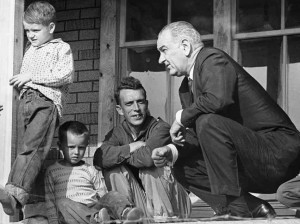For anyone over forty years of age, events in Ukraine over the past two weeks have evoked an uncomfortable sense of déjà vu. An assertive, vehemently anti-Western Russia seeking to resurrect its old sphere of influence in Eastern Europe conjures up memories of the Soviet bloc confronting NATO during the Cold War. The Russian occupation of Crimea raises the most significant threat to global security since the end of the Cold War, and the possibility of a war among great powers is higher now than at any time since the Cuban Missile Crisis.
 In such circumstances, small miscalculations can have vast consequences. Western options are limited. Neither the US nor NATO is likely to use force to stop Russia’s occupation or even annexation of Crimea. But the risks of acquiesence are high. Putin’s claimed right to intervene on behalf of ethnic Russians in other countries–can anyone say Sudeten Germans?–is dangerous and destabilizing. And it is difficult to predict what Putin, or even the volatile Ukrainian government, might do next. Were an actual war to break out between Russia and Ukraine, bringing armed Russian troops to the borders of NATO, the US and its allies would almost surely be drawn into the conflict.
In such circumstances, small miscalculations can have vast consequences. Western options are limited. Neither the US nor NATO is likely to use force to stop Russia’s occupation or even annexation of Crimea. But the risks of acquiesence are high. Putin’s claimed right to intervene on behalf of ethnic Russians in other countries–can anyone say Sudeten Germans?–is dangerous and destabilizing. And it is difficult to predict what Putin, or even the volatile Ukrainian government, might do next. Were an actual war to break out between Russia and Ukraine, bringing armed Russian troops to the borders of NATO, the US and its allies would almost surely be drawn into the conflict.
Under such circumstances, it becomes important for us to understand why Russia is acting as it is. Since the Berlin Wall fell, various theories have been advanced to explain the shape of international order in the post-Cold War world. Several of the most influential accounts, identifying different driving variables at the root of state behavior, potentially explain Russian actions in Ukraine.
Power. Since the end of World War II, the dominant school of thought in American foreign policy has been realism. Realists such as Kenneth Waltz or John Mearsheimer argue that states act in pursuit of their own national interest. That interest is shaped by the anarchical nature of the international system, in which states can ultimately rely only on their own resources for survival. They are thus driven primarily to seek power, in order to gain security. This does not mean that states are always aggressive; realists view states as rational actors, which can be deterred from acting in ways that would decrease their power and harm their interests. But states are always seeking an opening. This competitive and antagonistic vision of international order fits the Russian move into Ukraine: Vladimir Putin, sensing an opportunity to extend Russian power and the unlikelihood of an effective Western response, saw his opening and seized it.
Culture. Perhaps the most influential account of international politics over the past fifteen years has been that offered by Samuel Huntington in his book The Clash of Civilizations and the Remaking of World Order. Huntington argues that the world is divided into a number of core civilizations–among them Western, Islamic, Sinic, and Orthodox–which he defines as the largest cultural groupings toward which people feel affinity. After a Cold War era in which conflict was primarily ideological, he argues, conflict in our new era will occur primarily along civilizational lines. Thus we should not be surprised to see Russia, the dominant country within Orthodox civilization, confronting a Western world that it regards as increasingly encroaching upon it through actions such as EU expansion. Nor is it surprising that Ukraine–a country divided between an Orthodox eastern half and a Catholic western half–would become a battleground in civilizational conflict. When Putin claims the right to protect Russian minorities in other countries, he is making a typical civilizational gambit.
Ideology. It is tempting to think that ideological conflict ended with the Cold War. But ideological conflict can take different shapes. Neoconservative analyst Robert Kagan has argued that instead of ideological conflict ending, it has instead re-emerged in an older form that dominated much of Western history during the eighteenth and nineteenth centuries: the struggle between freedom and authoritarianism. The United States has always been a “dangerous nation,” Kagan says, because our example of free, democratic government, with its appeal for oppressed populations, poses by its very existence and success a threat to authoritarian governments everywhere. European monarchs knew this in 1800, and Vladimir Putin knows it today. So when he sees Western governments support a democratic movement to overthrow the pro-Russian Yanukovych government in Ukraine, he responds in kind, seeking to undermine the destabilizing spread of freedom and democracy on Russia’s border.
It is a sign of the current situation’s danger that all three of these theories point in the direction of continued likely conflict with Russia. There is no more pressing, or difficult, task facing the Obama administration at present than sorting out the roles of power, culture, and ideology in the current conflict and devising a response accordingly.

